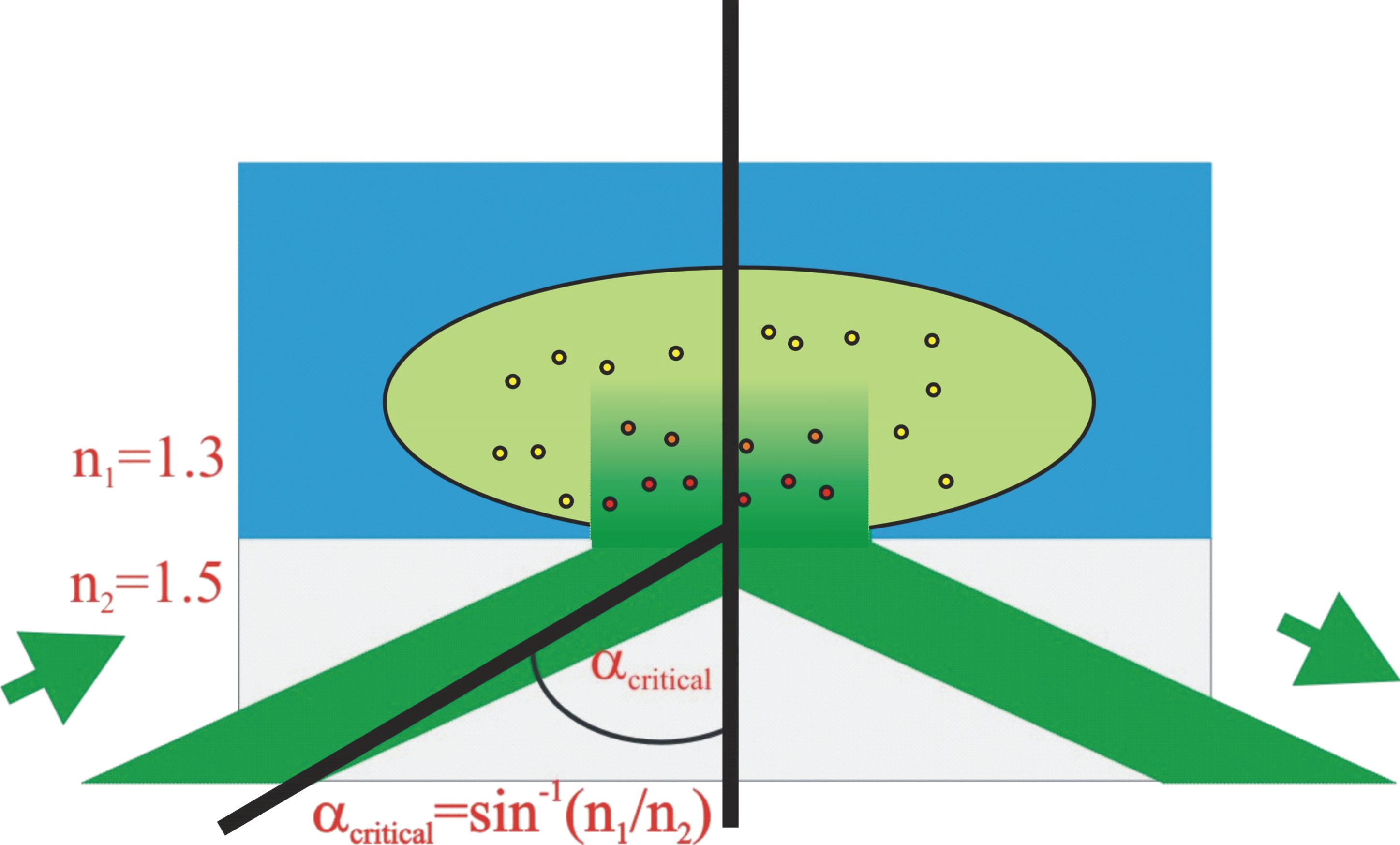|
|
Total Internal Reflection Fluorescence Microscopy (TIRFM)The intensity of the evanescent field established normal to a medium boundary in refractive index at which total internal reflection (TIR) has occurred decays steeply with distance from the boundary (as represented here by the interface between a glass coverslip and a water-based pH buffer), implying a thin excitation field for fluorophores typically ~100nm high. Bulk fluorophores are not excited and so contrast can be increased to such a high level as to make single fluorophore localization possible, even in vivo as illustrated with the bacterial cell.
There are two popular methods for achieving TIRF, objective and prism-based methods. We currently utilise the objective approach, but are implementing prism methods in the form of detachable modules, objective based (Fig2, left-panel), or prism-based (Fig2, right-panel). Our custom-built TIRFM allows incident excitation light to be split between a TIRF path and an independent focussed laser spot ("trap") path. This permits both focussed laser photobleaching and laser-tweezing experiments, whilst simultaneously monitoring fluorescence emission from either TIRF or conventional widefield epifluorescence. Excitation is via one or more laser sources, or via mercury arc illumination. Some investigations will utilise quantitative FRET (Foerster Resonance Energy Transfer) to assess the nature of in vivo interactions between different protein components of a bacterial cell.
|
 |
DHTML and javascript menus courtesy of
TwinHelix Designs
maintained by Mark Leake last updated: 17 February 2013 |




